Red Rum Grand National Wins
- 1977 - ridden by Tommy Stack trained by Donald ‘Ginger’ McCain
- 1974 - ridden by Brian Fletcher trained by Donald ‘Ginger’ McCain
- 1973 - ridden by Brian Fletcher trained by Donald ‘Ginger’ McCain
The greatest Grand National horse of all time. There is nothing else to say.
The only horse that has managed to win the race three times, it could have been more, too, with a further two runs in the race where he finished second. The people’s horse is how he was known, an acknowledgement of just how many people loved this animal and wanted him to succeed.
Ginger McCain specifically trained him with the Grand National in mind for some years, this was his main target and a race he made his own quite quickly. When you think of the Grand National, his name is the one that instantly pops into your head, regardless of if you were around when he ran.
Foaled in 1965, the horse died aged 30 in October 1995. He was buried beside the winning post at Aintree Racecourse, and still, to this day, fans go to pay their respects and lay flowers for perhaps the most loved racehorse of all time.
Full Results
| Year | Result | Prize Money | Handicap | Jockey | Trainer |
|---|---|---|---|---|---|
| 1977 | 1 | £41,140 | 11-8 | Tommy Stack | Donald ‘Ginger’ McCain |
| 1976 | 2 | £11,410 | 11-10 | Tommy Stack | Donald ‘Ginger’ McCain |
| 1975 | 2 | £11,590 | 12-00 | Brian Fletcher | Donald ‘Ginger’ McCain |
| 1974 | 1 | £25,103 | 12-00 | Brian Fletcher | Donald ‘Ginger’ McCain |
| 1973 | 1 | £25,486 | 10-5 | Brian Fletcher | Donald ‘Ginger’ McCain |
Winning His First Grand National In 1973
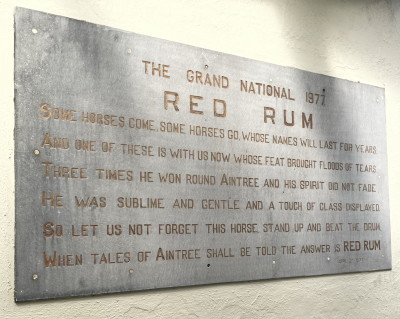 Prior to his first Grand National win, Red Rum was of course, not very well known by the wider public. He was fancied to go well in this race, though, with many seeing him as being nicely weighted and the right type of horse for the race, despite his breeding and where he began on the track.
Prior to his first Grand National win, Red Rum was of course, not very well known by the wider public. He was fancied to go well in this race, though, with many seeing him as being nicely weighted and the right type of horse for the race, despite his breeding and where he began on the track.
Red Rum and Crisp were sent off as the 9/1 joint-favourites, and it was these two that would end the race first and second, giving us one of the best Grand National battles up the run in. Red Rum was well behind but stayed on strongly, Crisp gave all he could, but ultimately, it wasn’t enough to keep the challenger at bay.
Crisp was well clear in the early part of the race, he wanted to make it a staying test and stretch out the field. He was 20 lengths clear by the time the horses had reached the end of the first circuit. That grew even further, thanks to a combination of him going well and kicking further ahead and a couple of his closest challengers falling in the race.
Richard Pitman was on board Crisp, and after the race, he recalled an instance in it where he thought he was on top but knew Red Rum was still a danger. Going past Becher’s Brook on the second circuit, he passed jockey David Nicholson, who had fallen previously, and he shouted to Pitman, telling him he was 33 lengths clear, it was time to kick on and win the race.
Right at this point, Pitman was also listening to the race commentary to find out where his opponents were. Commentator Michael O’Hehir said that Red Rum was coming out of the pack to chase and that Brian Fletcher was kicking him hard. He was closing, albeit slowly, but he was becoming a danger to the leader.
At the final fence, Crisp was 15 lengths clear of his rival, but the big weight on his back, and the pace he had set, was beginning to show. He tired up the run in, and with far less weight to carry, Red Rum was really beginning to get going.
The end was a thriller, Red Rum was closing, Crisp was trying to hang on, and with both of them being joint favourites, the thousands in attendance were almost all cheering home one of the runners.
With two strides to go, Red Rum finally got ahead, he had out-battled and outstayed Crisp, mainly thanks to the weight they were carrying, Crisp had 23lb more on his back. Red Rum would go on to win the race by three-quarters of a length in what goes down as one of the most dramatic endings.
A winning time of nine minutes and 1.9 seconds was recorded, mainly thanks to the blistering pace that Crisp had tried to set, a gamble that almost paid off. This would become the record time for a Grand National win, one that would last until 1990.
Following Up And Winning Again In 1974
Winning the Grand National once is a remarkable feat, one that many horses, trainers and jockeys try to do in their careers without success. But winning twice, for horses in particular, is incredibly difficult, mainly because the race is a handicap, so when you win the first time, you are punished for that and given a rise in the weights.
That didn’t stop him from coming back for more, and he’d got 23lb extra on his back, thanks to his win in 1973, which of course, made things tougher. One positive, though, for the horse is that he was fully in the prime of his career, he wasn’t one of the returning winners coming back as an older horse on the decline, he was still at his peak.
Red Rum was sent off with an SP of 11/1, which put him third in the betting, behind favourite Scout, ridden by Tommy Stack and second favourite L’Escargot, ridden by Tommy Carberry. The second favourite would be the horse to beat Red Rum a year later, but in 1974, it was, once again, the year of Red Rum.
Despite the big weight on his back, Red Rum would not be denied. He came here and won like a true champion, he was the best jumper in the field, the strongest stayer, and crucially, he knew where the winning line was after landing the race 12 months earlier.
On the run in, L’Escargot and Charles Dickens did try to mount a challenge, but given how strongly he had stayed on a year earlier, it was not going to be easy for those runners. They couldn’t get to the Ginger McCain runner, who went forward, kept going to the line and, ultimately, took his second Grand National title.
Huge cheers came once again, the horse had done something special, and those at Aintree that day certainly gave him a cheer big enough to recognise his accomplishment.
Two Second Placed Efforts In Bid To Land Hat Trick
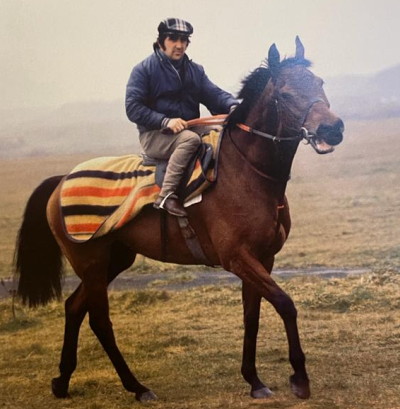 While the talk about Red Rum always revolves around the fact that he landed a hat trick in the race, he also finished second on two other occasions, which further enhanced his record, and of course, how much the public loved him.
While the talk about Red Rum always revolves around the fact that he landed a hat trick in the race, he also finished second on two other occasions, which further enhanced his record, and of course, how much the public loved him.
These two second placed finishes came back to back in the years between his second and third win, which were in 1975 and 1976.
First up in 1975, he was beaten by the horse he beat in 1974, L’Escargot was able to get on top and gain revenge against his rival. With huge public backing, Red Rum was sent off as the 7/2 favourite for the Grand National, one of the shortest SP’s we’ve ever seen, but of course, given what the horse had achieved at this point, it is easy to see why everyone wanted to be on them.
But on this occasion, he wasn’t able to reel in the leader. L’Escargot was a clear winner of the race, coming home to take the race by 15 lengths, avenging his defeat a year earlier. He did it as a 12-year-old, two years older than Red Rum, winning the contest at the end of his career.
A year later and Red Rum was back for more. This time, in 1976, the script was much the same as it was a year earlier, with Red Rum unable to close down the race winner, due to a big weight on his back.
This time, it was Rag Trade that won the race, he was sent off at 14/1, while Red Rum had an SP of 10/1. Public support for Red Rum was still there, he was growing into a legend at this point, but after watching him lose a year earlier, he wasn’t as strongly fancied by many, who thought he maybe had too much weight, once again.
When Rag Trade crossed the line in first place, he created Grand National history of his own, becoming the fourth winner of the race for trainer Fred Rimell. This would give him the outright record when it came to winners in the race by a trainer, though in 2004, Ginger McCain, the trainer of Red Rum, would come back and tie this record with him.
While Brian Fletcher was on board for the first two wins and the first second-placed finish, Red Rum had a new jockey in 1976. Tommy Stack took the mount, guiding him around Aintree, and he would retain it in 1977 when the horse would be back for more.
Landing His Third Grand National In 1977 And Making History
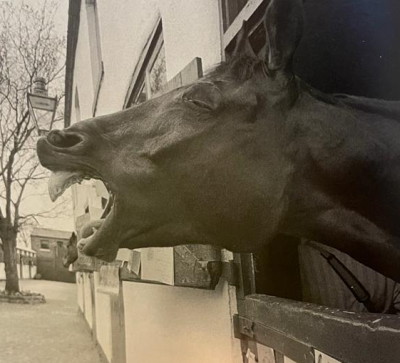 Two wins in the race already had cemented Red Rum as a favourite of the people, and his second placed efforts since then had shown he had the ability to run well but perhaps would continue to fall short.
Two wins in the race already had cemented Red Rum as a favourite of the people, and his second placed efforts since then had shown he had the ability to run well but perhaps would continue to fall short.
He was sent off for this race at 9/1 behind Andy Pandy, who was favourite. There was a huge weight of public money on Red Rum, but given he was now a 12-year-old, many punters believed that he was too old and stayed clear. How wrong they were.
Ridden by Tommy Stack for the second time, the horse was sparkling before the race, but earlier in the season, he looked like a shadow of his former self. Trainer Ginger McCain had even publicly said that he had lost confidence in the horse.
However, a strong sixth placed finish in the Greenall Whitley Chase at Haydock, his final run before the Grand National, was the start of him returning to form. After that race, he was getting better at home each week, and before the Grand National, he was described as being in great form.
He had top weight to carry, as you would expect, but this was lower than he’d previously had, at 11 stone 8lb, which did make the task a little easier on him.
It was a messy race and one where the track and fence knowledge that Red Rum had gained over the years was really to his advantage. Almost half of the 42-runner field had departed the race on the first circuit, but Red Rum and Tommy Stack managed to keep away from the troubles to remain in with a chance.
The first flight on the second circuit saw more drama as big leader Boom Docker refused to jump, he was well clear, so his departure made the race a little easier tactically for those in behind. The biggest incident came at the 22nd fence, with another fall causing it. Pre-race favourite, and leader at the time, Andy Pandy, fell here, which left Red Rum out in front, on the track he loved, and the roar from the crowd we unheard of.
He knew his way home from here and kept stretching his lead. By the time we’d reached the final couple of fences, only something dramatic, or the fences in front of him, would stop Red Rum from landing his third National.
Neither came, and Red Rum was kept up to his work by Stack in the saddle, the pair were clear enough to enjoy the huge applause from the stands at Aintree and celebrate in style up the run in.
Sadly, a unique chance to get a look into the world of Tommy Stack was denied right before the race. He’d initially agreed to have a microphone recording him going around Aintree, something done by the BBC for the first time, but when Stack saw the size of the equipment he would have to wear, he refused and weighed out for the race without it. Had he done this, we’d have heard his reaction to the huge cheers he was getting up the run in.
No horse had ever won the Grand National three times before this moment, no one has done it since. A true legend of the game.
Retirement From Horse Racing
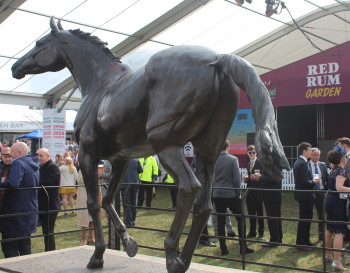 There was hope that Red Rum would remarkably run again in the Grand National after his 1977 win, a race that would have been his sixth attempt. However, he suffered a hairline fracture in the build-up to the race, an injury that he would not be able to recover from.
There was hope that Red Rum would remarkably run again in the Grand National after his 1977 win, a race that would have been his sixth attempt. However, he suffered a hairline fracture in the build-up to the race, an injury that he would not be able to recover from.
The day before the 78 National, Red Rum was at Aintree having a gallop. After watching him at this point, Ginger McCain made the decision that retiring him was best for the horse, as he wasn’t prepared to take the risk a day later by running him in the National.
The news of his retirement goes to show what this horse had done for the sport of racing. At the start of the decade, there were questions over whether the race should be allowed to continue in its current form, without big changes, and the Jockey Club were under fire.
Red Rum allowed people to fall in love with the race again, and by the time they’d reached the end of the decade, it was all change. The news that Red Rum had retired from racing was the first piece in the late bulletin at 9 pm on BBC, as horse racing hit the headlines with a good story.
Not only that, but despite sport often being for the back pages of newspapers, the following day, Red Rum was on the front page of pretty much every newspaper. Racing had turned the corner, and much of that was down to Red Rum.
The Legacy Left Behind
The story of Red Rum would go on far past his racing career. The people’s horse he was offered the chance to enjoy public events, where people could get close to a horse that many fell in love with.
He was often seen opening new shops, especially betting shops and supermarkets. Elsewhere, memorabilia became a big thing, we had Red Rum-themed playing cards, mugs, posters, jigsaws, plates and much more. Anything you could think of had Red Rum on it.
Books and stories followed, everyone wanted a piece of Red Rum, and the key here is seeing the demand. The only reason things like this were created is that the people wanted it.
Sadly, on October 18, 1995, Red Rum died at the age of 30. He’d lived a great life, both while he was a racehorse and then afterwards, given the opportunity to do much more than pretty much any other racehorse has ever done before.
Eleven years after his death, which you can argue is a period when he had long departed the limelight, he was still named as the most popular horse in the UK, as 45% of Britons named him when they were asked to name an equine animal, which shows just what kind of legacy he left behind, given how long after his racing career and death this survey came.
He loved Aintree racecourse, and was the biggest star on that track, so it was fitting to see him being buried there. He was buried by the side of the winning post, and has a memorial for racegoers and fans to go and pay their respects to him.
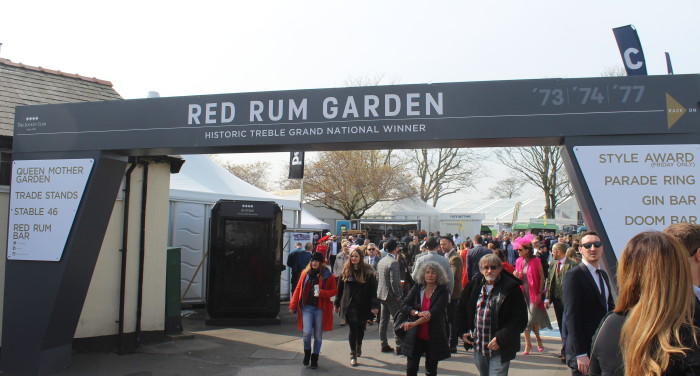
On anniversaries of his death and the Grand National each year, flowers are laid at the memorial for him.
What he did on the track was incredibly special, something that we may never see matched in the future. However, on top of that, Red Rum continued to give to the public after retirement. He was the people’s horse and will never be matched when it comes to that.
Red Rum’s Early Life
When you look at what Red Rum did in his career, running five times in the Grand National and winning it three times, you would be forgiven for assuming he was always a national hunt horse with big stamina in his pedigree. That couldn’t be further from the truth, which is another fascinating, though often overlooked, element of this story.
Red Rum was bred to be at his best over one mile on the flat, not four miles over jumps, and he was closely related to an Irish 2000 Guineas winner. His career began in low graded sprint races, a far cry from the slog of a National.
In his very first race, which came over five furlongs, Red Rum dead-heated, and to bring the story around full circle, this race was actually at Aintree racecourse, as they also used to host flat racing. He won over seven furlongs as a two-year-old and again as a three-year-old over the same distance, at this point, it would have been a wild guess to say he would turn out a Grand National winner.
Various trainers had him over the years, but eventually, Ginger McCain picked up the horse, buying him for Noel le Mare, and took over his training. McCain saw he had stamina, so he trained him with different targets in mind, and the rest, as they say, is history.
Red Rum’s Big Race Wins
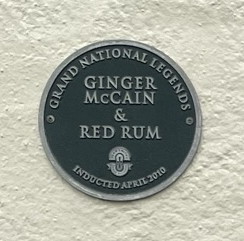 Of course, the three Grand National victories by Red Rum are the biggest of his career, and this is all he is known for. After winning one, the race became the one day on the calendar that everything built towards, it was all about being at Aintree and being 100% ready on the day.
Of course, the three Grand National victories by Red Rum are the biggest of his career, and this is all he is known for. After winning one, the race became the one day on the calendar that everything built towards, it was all about being at Aintree and being 100% ready on the day.
However, another part of Red Rum’s career that is often overlooked is another big win elsewhere, which also made history.
In 1974, the same year in which Red Rum won his second Grand National, the horse was also sent up to Scotland, where he won the Scottish Grand National. By doing this, he became the first horse to win both the Aintree Grand National and the Scottish Grand National in the same year, another big moment in his career and one that will likely never be matched by anyone else.
In many ways, Red Rum was all about the Grand National, but he was also much more than that, a real icon of racing and one that still,to this day, is adored by the public.
